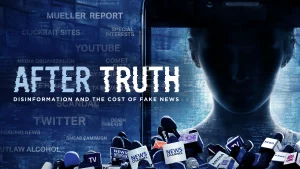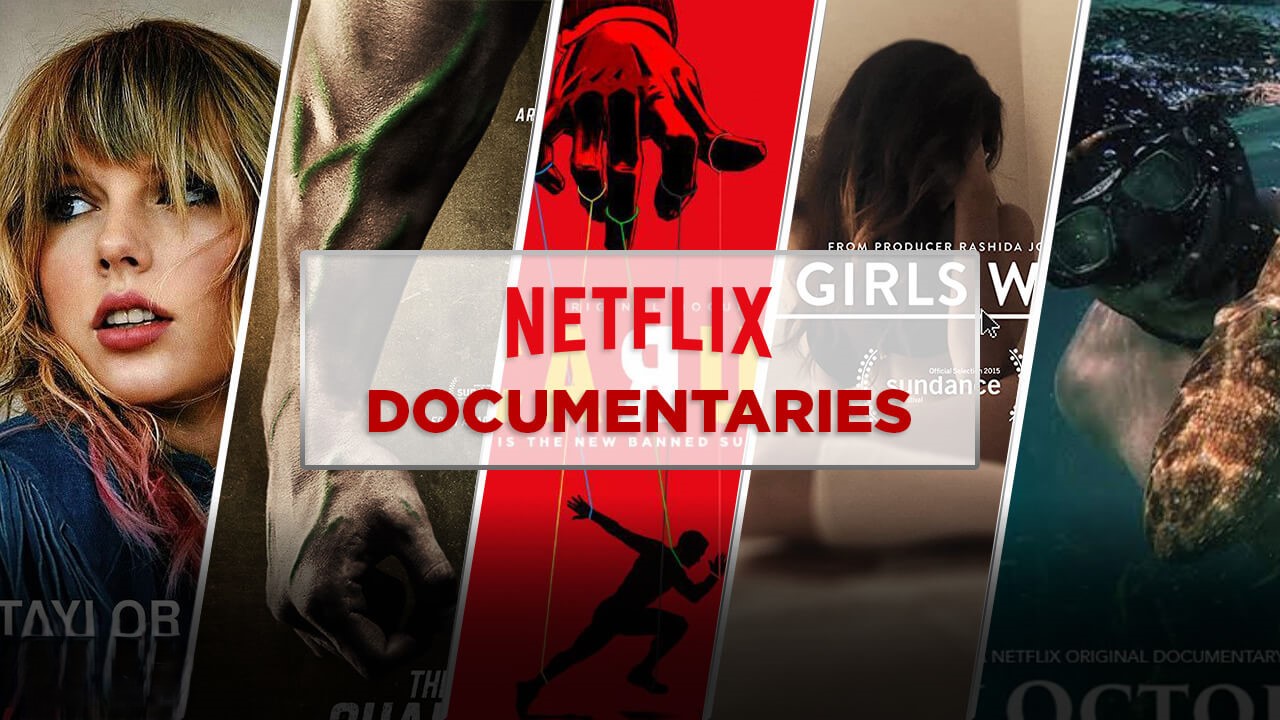Introduction
In recent years, the landscape of media consumption has undergone a seismic shift. The proliferation of streaming platforms has revolutionized the way audiences access and engage with content. Among the various genres that have benefited from this transformation, documentaries stand out as a particularly notable success story. This article delves into the rise of documentaries in the streaming era, exploring the factors behind their burgeoning popularity and the implications for truth-seeking in a digitally connected world.
The Shift to Digital Platforms
Documentaries have become more accessible than ever, thanks to the rise of streaming platforms. No longer limited to film festivals or specific TV networks, these films are now available to millions of viewers worldwide. Platforms like Netflix, Amazon Prime, and Hulu offer a wide selection of documentaries that cater to a broad audience, making it easy for people to discover and watch content on a variety of topics.
Binge-Watching and Long-Form Documentaries
Streaming platforms have also encouraged the development of long-form documentary series. Instead of being restricted to a single feature-length film, filmmakers can now create multi-part series that explore their subject matter in depth. This format has allowed documentaries like “Tiger King” and “Making a Murderer” to gain massive popularity, as viewers binge-watch entire seasons over a weekend.
Expanding Global Reach
One of the key advantages of streaming platforms is the ability to reach global audiences. Documentaries that once had limited regional appeal can now find viewers in different countries and cultures. This global exposure has enabled films about local or niche issues to resonate with audiences everywhere, spreading important messages beyond geographical boundaries.
The Appeal of Real Stories
In a world where media consumption is dominated by fiction, the appeal of documentaries lies in their focus on real stories. Audiences are increasingly drawn to authentic narratives that provide insight into real-life events, people, and issues. This trend reflects a growing hunger for truth and a desire to engage with meaningful content.
The Evolution of Documentaries

-
Early Beginnings
Documentaries have a storied history dating back to the early days of cinema. The genre began with short, factual films like the Lumière brothers’ “Workers Leaving the Lumière Factory” (1895), which captured everyday life with an unembellished lens. As the medium evolved, so did the scope and ambition of documentaries. Pioneering filmmakers like Robert Flaherty, with his seminal work “Nanook of the North” (1922), demonstrated the potential of documentaries to tell compelling, narrative-driven stories grounded in reality.
-
The Golden Age
The mid-20th century witnessed a golden age for documentaries, characterized by the rise of cinéma vérité and direct cinema movements. Filmmakers like D.A. Pennebaker, Albert and David Maysles, and Frederick Wiseman embraced a fly-on-the-wall approach, capturing real-life events with minimal intervention. This period produced iconic works such as “Don’t Look Back” (1967) and “Grey Gardens” (1975), which remain influential to this day.
-
The Digital Revolution
The advent of digital technology in the late 20th and early 21st centuries democratized the production and distribution of documentaries. Affordable digital cameras and editing software enabled a new generation of filmmakers to create high-quality content without the need for substantial budgets. This technological shift set the stage for the streaming revolution that would follow.
The Streaming Revolution

-
The Rise of Streaming Platforms
The emergence of streaming platforms like Netflix, Amazon Prime Video, Hulu, and Disney+ has fundamentally altered the media landscape. These platforms have disrupted traditional distribution models, offering audiences unprecedented access to a vast array of content at their fingertips. For documentaries, this shift has been particularly transformative.
-
Accessibility and Convenience
One of the primary advantages of streaming platforms is their accessibility. Viewers can watch documentaries from the comfort of their homes, at any time, and on a variety of devices. This convenience has expanded the audience for documentaries, attracting viewers who might not have sought out the genre in a traditional cinema setting.
-
Algorithmic Recommendations
Streaming platforms leverage sophisticated algorithms to recommend content based on viewers’ preferences and viewing history. This personalized approach has helped documentaries find new audiences. For example, a viewer who enjoys true crime dramas might be introduced to a documentary series like “Making a Murderer” (2015), while someone interested in environmental issues might discover “Our Planet” (2019).
-
Original Content
Streaming platforms have also become major producers of original documentary content. Netflix, in particular, has invested heavily in the genre, producing critically acclaimed documentaries such as “13th” (2016), “American Factory” (2019), and “Tiger King” (2020). These original productions have garnered widespread attention and accolades, further elevating the profile of documentaries in the streaming era.
The Appeal of Documentaries

-
Authenticity and Truth-Seeking
In an era marked by misinformation and “fake news,” documentaries offer a semblance of authenticity and truth-seeking that resonates with audiences. The genre’s commitment to factual storytelling and in-depth exploration of real-world issues provides a counterbalance to the often sensationalized and superficial content found elsewhere.
-
Diverse Topics and Perspectives
Documentaries cover an incredibly diverse range of topics, from social justice and environmental issues to history, science, and personal stories. This diversity ensures that there is something for everyone, regardless of their interests. Additionally, documentaries often amplify marginalized voices and perspectives, shedding light on stories that might otherwise go untold.
-
Emotional Engagement
Documentaries have the power to evoke strong emotional responses. By presenting real-life stories and events, they can inspire empathy, outrage, and a desire for change. This emotional engagement can drive viewers to take action, whether it’s supporting a cause, advocating for policy changes, or simply becoming more informed about important issues.
Challenges and Criticisms

-
Ethical Considerations
The pursuit of truth in documentaries is not without its challenges. Filmmakers must navigate ethical considerations, such as the potential for exploitation of subjects, the need for informed consent, and the balance between storytelling and factual accuracy. These ethical dilemmas can be particularly pronounced in documentaries that deal with sensitive or controversial topics.
-
Bias and Subjectivity
While documentaries strive for objectivity, they are inevitably influenced by the perspectives and biases of their creators. The choice of what to include or exclude, how to frame a story, and the use of editing techniques can all shape the narrative in subtle ways. Viewers must remain critical and discerning, recognizing that documentaries, like all forms of media, are not entirely free from bias.
-
The Impact of Streaming Algorithms
While algorithmic recommendations have helped documentaries reach new audiences, they also raise concerns about the echo chamber effect. Viewers may be exposed primarily to content that aligns with their existing beliefs and preferences, limiting their exposure to diverse perspectives. This phenomenon underscores the importance of actively seeking out a broad range of documentaries to gain a more comprehensive understanding of complex issues.
Social Media and Documentary Promotion
Social media has played a significant role in promoting documentaries. Platforms like Twitter, Instagram, and Facebook allow viewers to discuss and share documentaries with their networks, helping these films gain momentum through word-of-mouth. Viral discussions often bring more attention to important social and political issues covered in these films, amplifying their impact.
The Rise of Interactive Documentaries
As technology advances, new formats such as interactive documentaries are beginning to emerge. These allow viewers to engage with the content in real-time, making choices that influence the direction of the story. This immersive experience has the potential to revolutionize how documentaries are consumed, offering a more personal connection to the subject matter.
Challenges for Documentary Filmmakers
Despite the growing popularity of documentaries, filmmakers still face challenges in the streaming age. With so much content available, it can be difficult for individual films to stand out. Filmmakers must often rely on strong storytelling and unique subject matter to capture attention in an increasingly crowded market.
Documentaries as Catalysts for Change
Beyond entertainment, documentaries are increasingly seen as tools for social change. Films like “The Social Dilemma” and “Blackfish” have sparked important conversations and even led to policy changes in various industries. This power to influence public opinion makes documentaries a unique and influential part of modern media.
Analysis Table: Factors Behind the Rise of Documentaries
| Factor | Impact on Documentary Genre |
|---|---|
| Streaming Accessibility | Increased audience reach and democratization of the genre |
| Audience Demand for Truth | Shift toward real-world, authentic content in a post-truth era |
| Social Movements | Documentaries as tools for activism and social change |
| True Crime Popularity | Surge in popularity due to audience fascination with justice and crime |
| Celebrity Culture | Increased focus on humanizing celebrities through documentary storytelling |
Comparative Table: Traditional Documentaries vs Streaming Era Documentaries
| Aspect | Traditional Documentaries | Streaming Era Documentaries |
|---|---|---|
| Distribution | Film festivals, public television | Streaming platforms accessible worldwide |
| Audience | Niche, often academic or specialized | Global, mainstream audiences |
| Production Costs | Higher, with limited funding options | Lower, with more diverse funding sources |
| Content Reach | Limited, dependent on screenings and airings | Unlimited, instant global accessibility |
| Influence on Social Issues | Strong but limited to niche audiences | Significant, with broad cultural impact |
Conclusion
The rise of documentaries in the streaming era represents a significant cultural shift. As streaming platforms continue to expand their offerings and invest in original content, documentaries are poised to play an increasingly prominent role in the media landscape. Their ability to inform, engage, and inspire audiences makes them a powerful tool for truth-seeking in a digitally connected world.
As viewers, we have the opportunity to explore a vast and diverse array of documentary content, broadening our horizons and deepening our understanding of the world around us. By embracing the genre and remaining critical and discerning consumers of media, we can harness the power of documentaries to foster greater awareness, empathy, and positive change.




